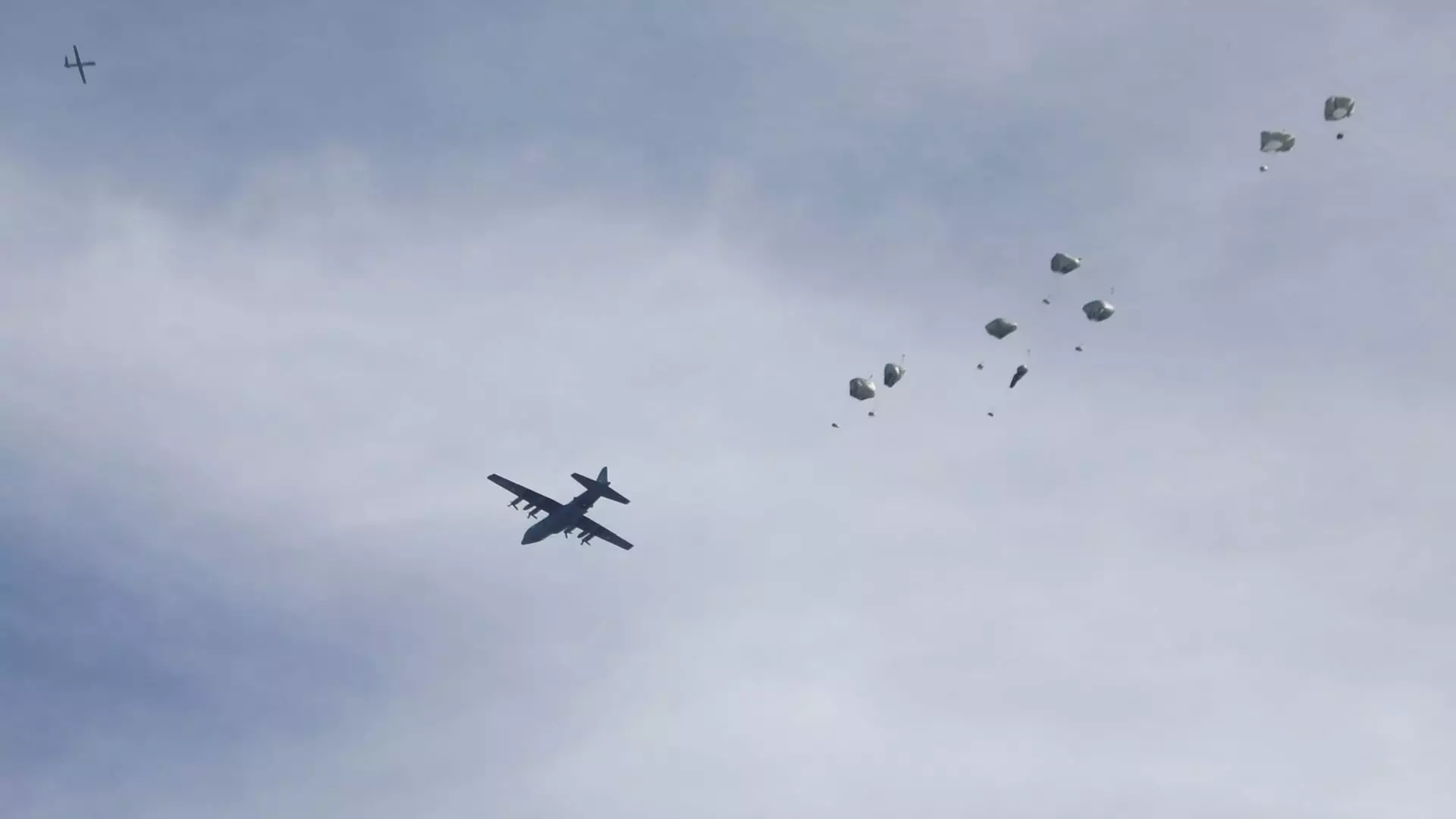The recent C-130 cargo plane food airdrop in Gaza, authorized by President Joe Biden, has sparked both praise and criticism. The operation, which involved dropping 66 bundles containing about 38,000 meals in southwest Gaza, was seen as an emergency humanitarian response after over 100 Palestinians died while trying to access aid from a convoy. Although the intent behind the airdrop was noble, there are several critical aspects that need to be addressed.
One of the main criticisms of the airdrop operation is the efficiency and safety concerns associated with this method of delivering aid. While the airdrop was able to provide much-needed meals to the people of Gaza, aid officials have pointed out that airdrops are not the most effective means of distributing aid. Trucks are capable of transporting more supplies in a more organized manner, ensuring that aid reaches those in need without the chaos that often accompanies airdrops.
Additionally, safety concerns were raised due to the chaotic nature of the airdrop. The incident in which Palestinians were killed while trying to access aid from the convoy highlights the risks associated with aerial deliveries. While the U.S. Central Command stated that the operation was coordinated with the Royal Jordanian Air Force and involved specialized Army Soldiers, it is essential to thoroughly assess the safety protocols and procedures to prevent such tragedies in the future.
Moreover, the reliance on airdrops as the primary method of delivering aid to Gaza raises questions about the overall strategy for humanitarian assistance in the region. While airdrops may be useful in certain situations, they should not be viewed as a long-term solution. It is crucial to explore alternative methods, such as increasing truck convoys or negotiating access to land routes, to ensure a more sustainable and efficient delivery of aid.
The United Nations’ assertion that one-quarter of Gaza’s population faces starvation underscores the urgent need for a comprehensive and coordinated approach to address the humanitarian crisis. Airdrops, while providing immediate relief, should be complemented by other strategies to ensure that aid reaches those most in need without compromising their safety and dignity.
The U.S. military C-130 food airdrop in Gaza, while well-intentioned, highlights the complexities and challenges of delivering humanitarian assistance in conflict zones. Criticism of the operation’s efficiency, safety, and long-term viability underscores the need for a more holistic approach to address the humanitarian crisis in Gaza. As the international community grapples with the ongoing challenges in the region, it is imperative to prioritize the well-being and dignity of all individuals affected by conflict and displacement.

Leave a Reply